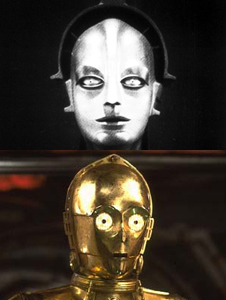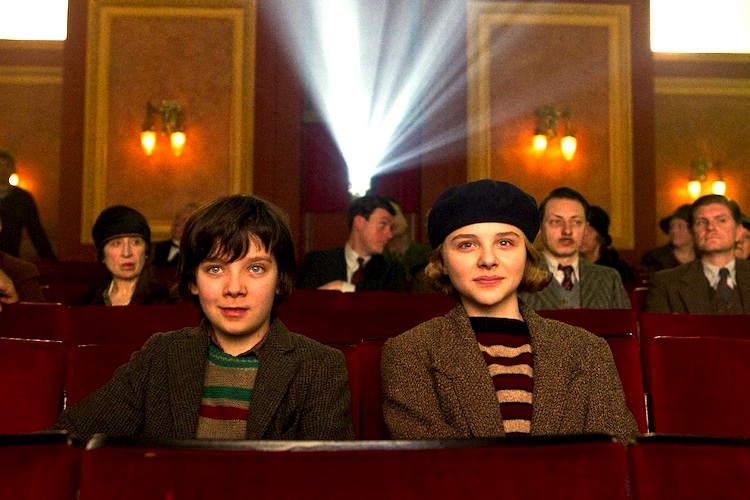[Editor’s Note: The article below and its accompanying slideshow appears in its entirety today at The Atlantic.]
Decoding the many references to film history in Martin Scorsese’s Oscar-nominated movie
By Govindini Murty. Martin Scorsese’s delightful children’s film Hugo is currently nominated for eleven Oscars, the most of any film of 2011. And in a year of movies like The Artist and Midnight in Paris that pay homage to early 20th century film and cultural history, Hugo might be the most complex cinematic homage of them all.
Based on the children’s book The Invention of Hugo Cabret by Brian Selznick, Hugo tells the story of an orphaned boy who lives in the walls of a train station in 1931 Paris. Young Hugo (Asa Butterfield) maintains the station’s clocks and tries to repair a mysterious automaton left to him by his late father, a clock maker. While doing so, Hugo encounters an old man who sells toys in the station, Papa Georges (Ben Kingsley), and his precocious step-daughter Isabelle (Chloë Grace Moretz). Hugo and Isabelle team up to find the secret of the automaton, discovering along the way that Papa Georges is none other than Georges Méliès, the legendary turn of the century filmmaker known for such fantasy films as A Trip to the Moon (1902).
Scorsese uses the stunning 3D cinematography of Hugo much like a palimpsest, layering multiple levels of historical, cinematic, and intellectual history in each scene. Hugo references everyone from Jules Verne, Django Reinhardt, and the robot C-3PO to classic silent movies like Douglas Fairbanks’s The Thief of Bagdad, Robert Wiene’s The Cabinet of Dr. Caligari, and Harold Lloyd’s Safety Last. Scorsese has even said that he considers the 3D in Hugo as a cinematic form of Cubism.
This cultural guide will help to decode the wealth of allusions in Hugo, making for a crash course in film, art, and literary history:

Mysterious Automata
Hugo’s central mystery revolves around the automaton left to Hugo by his late father. The eerie metallic figure recalls such classic automata as the Machine-Man in Fritz Lang’s 1927 sci-fi epic Metropolis and C-3PO in Star Wars. According to Hugo author Brian Selznick, the inspiration for Hugo’s automaton came from an 1805 writing automaton created by Swiss clockmaker Henri Maillerdet, currently in the Franklin Institute in Philadelphia, as well from the 18th century Jaquet-Droz writing automata in Neuchâtel, Switzerland. Animated figures go back to the Renaissance, when mechanical humans and animals would appear out of clock faces to mark the time. Automata were also popular in Hellenistic Alexandria, where automated figures were used in mechanical puppet theaters and in temples to provide oracles.
In Hugo, the automaton possesses a dual quality—both ominous and marvelous. This reflects the ambiguous feelings that people have toward humanoid automata—seeing them either as frightening doppelgangers (as in Metropolis) or as magical helpers (as in Star Wars). The scene where Hugo dreams that he turns into the automaton reinforces this ambiguity and dramatizes a common fear of dehumanization in the machine age.
[For the rest of the article and the accompanying slideshow, please visit The Atlantic.]
Posted on February 22nd, 2012 at 8:16am.

Great post. Wish I had read it before I saw the movie! I caught some of the references, especially the dangling from the clock scene, but not nearly enough.I too thought the 3D worked very well. I would like to see it again just to see the reenactment of Melies’s marvelous, magical films.
I have Scorsese’s American film history CD, BTW; he is indeed a scholar and his love for film is evident.
The one place where the film really viaers from the biography is in its explanation for why and how his film career ended. I guess it’s no surprise that the movie glossed over the fact that Jehane (called Mama Jeanne in the film) had been his mistress during his previous marriage!